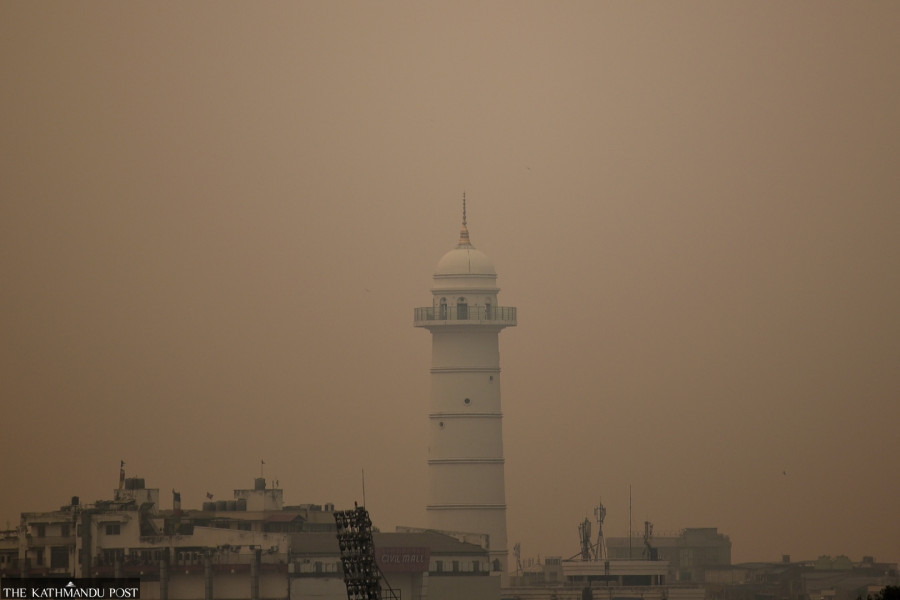Editorial
Tackle it now
The problem of air pollution is too serious and too urgent to put off for another day.
The gloomy days are upon us again. No sooner had the devastating monsoon rains left Nepali skies than the dry weather started. Those who had gone to their homes to celebrate the biggest festival, Dashain, have returned to cities, as have vehicles, contributing to the rising carbon monoxide levels. Farmers who have finished their seasonal harvest have piled up stubble on their farms to be burned openly. In a matter of days, thick haze and smoke coming from vehicles and farms will blanket the country, including the capital, Kathmandu, which has seen a worsening air quality in recent years. But the problem is by no means limited to Kathmandu.
Stubble burning presents a bigger problem than imagined. In Nepal’s Tarai belt, burning harvest residues has become common and has only increased in recent years. A report from 2020, “A model-ready emission inventory for crop residue open burning in the context of Nepal,” shows how farmers’ increasing use of modern agricultural machines like combine harvesters contributes to increasing emissions. These machines save farmers’ time but leave plenty of residue behind.
The general public and farmers are yet to internalise how their negligence is contributing to air pollution in the country, endangering lives, including their own. This has affected the vulnerable elderly and children the most; people of other ages are also facing health issues like pneumonia, bronchitis, conjunctivitis, skin allergy, stroke, and heart problems. Every year, particulate matter pollution takes the lives of 40,000 people in Nepal. Yet the public and government continue to pay scant attention to the issue.
Smog also drifts to our part of the sky from India, the southern neighbour. Stubble burning is rampant in the country’s breadbasket states of Punjab and Haryana. This year alone, 22 stubble-burning complaints have been made to the police in Haryana, as per Reuters. No matter how hard these states have tried to put a lid on the problem by arresting farmers responsible for poor air, Delhi’s air is already becoming dangerous. Kathmandu’s air quality index will likely deteriorate if instances of stubble burning increase both at home and in India. Already on Wednesday, Chitwan, a city around 170 km southwest of Kathmandu, fared even worse than the national capital, with an AQI of 150.
To address this crisis, farmers should be encouraged and sensitised to use climate-smart technologies, including modified combine harvesters and reaper harvesters, and taught about alternative uses of residues, like feeding them to animals, livestock rearing, and making biodegradable waste. Lighting them up should be the last resort. If these methods don’t work, the government can also punish repeat offenders through strict legal action. Cross-border climate diplomacy also needs to be ramped up—this has really become indispensable as climate change respects no borders.
With the impending danger of air pollution, the Kathmandu Metropolitan City, in collaboration with other federal stakeholders, has geared up to mitigate the problem this year through smoke metres, which detect vehicle emissions. But this is not enough. Again, the country should be able to control open burning and punish those involved in it. For this, the federal government must come up with a long-term plan. Other local units, particularly those with rampant stubble burning, must also step up to the plate. The problem is air pollution is too serious and too urgent to put off for another day.




 5.4°C Kathmandu
5.4°C Kathmandu












%20(1).jpg&w=300&height=200)

